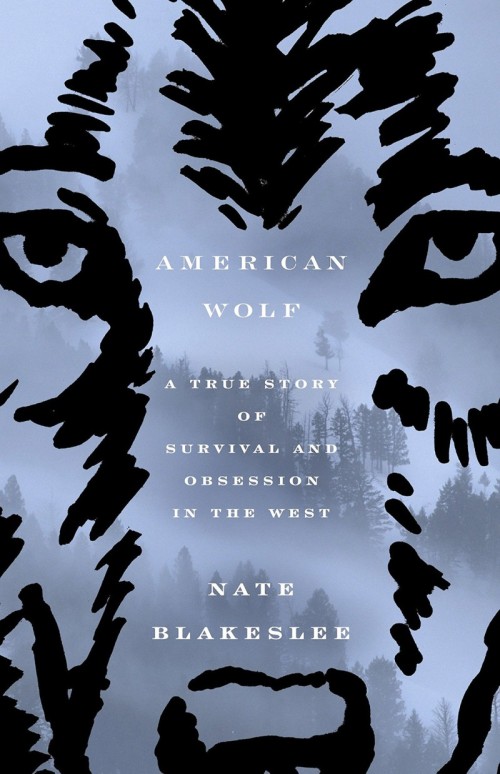by Nate Blakeslee
Broadway Books, 2018
Wolves, like gun control and the border wall, polarize political opinion, which is why Nate Blakeslee wrote American Wolf: A True Story of Survival and Obsession in the West. I own eight other wolf books, including Young and Goldman’s Wolves of North America, which is more or less an obituary; Barry Lopez’s classic Of Wolves and Men; and Farley Mowat’s fable Never Cry Wolf – none of which usher wolves anywhere near the schizophrenic twenty-first century. American Wolf is an engaging look at the struggle between natural resource consumers and natural resource watchers, a deep examination of wolves and their effects upon people who look at them, people who hunt them, and on the landscapes where we all coexist. What it’s not is a diatribe against hunting.
That wolves are big-time carnivores fuels the Western belief that fewer wolves means more elk. For example, when Yellowstone became a national park in 1872, one of the first tasks of park management – after Indian removal – was predator control. By the middle of the 1920s, wolves had been eliminated, setting in motion the now-familiar avalanche of consequences: elk proliferated to over 19,000; cottonwood and willow seedlings were chewed to the ground; unchecked by diminishing floodplains, rivers cut deeper channels. Beavers, wood ducks, and frogs disappeared. Trout perished in overheated pools. Eventually, their food supply depleted, the elk either starved, hides hung on racks of bones, or left Yellowstone to compete with livestock for the meager rations on public grasslands.
Beginning in 1995, to make amends, the US Fish and Wildlife Service reintroduced 31 wolves to Yellowstone. Wolves prospered and eventually spread beyond the park, jumpstarting a very positive trophic cascade. Among the results: elk grew wary, more alert, and didn’t linger along rivers; beavers (and their ponds) returned; coyote populations crashed and pronghorns rebounded. (Coyotes eat pronghorn fawns, something wolves rarely do.) And wolf-watching in the Lamar Valley became Yellowstone’s top eco-tourist attraction.
American Wolf has two protagonists: O-Six, the charismatic matriarch of the Lamar Valley wolf pack, formerly the best-known, most-watched wolf in the United States; and Rick McIntyre, the Cal Ripken of wolf-watchers, who hadn’t missed a day in the Valley since June 12, 2000, when he returned from his mother’s memorial. Although O-Six’s life ended tragically (I’m not giving anything away; her fate was national news and coalesces in the first chapter), she inspired a Facebook following, with many of her followers assembling in Yellowstone armed with spotting scopes and notebooks. In fact, one wolf watcher sold so many spotting scopes out of his trunk that he became one of Swarovski Optik’s top merchandisers.
Bizarre politics (Surprise, surprise!) weave their way through American Wolf. By way of example – in 2012, the US Senate was barely in Democrats’ control, and President Obama needed Montana Senator John Tester to be reelected. Because big-game hunting is big business in Montana, a majority of Tester’s constituents supported wolf hunting. Tester, a nimble politician, shoehorned a rider into the budget bill that placed the welfare of northern Rocky Mountain wolves in the hands of Montana and Idaho state officials. Obama signed the bill. Tester was reelected. And, for the first and only time, Congress overruled the Endangered Species Act.
Fortunately, the topography of the northern Rocky Mountains is unforgiving, and the mountains are sparsely populated. Wolves persisted and then spread, eventually establishing beachheads in eastern Washington and Oregon, where they remain protected. Lone animals have begun to make cameo appearances in northern California, Utah, and Colorado.
What makes American Wolf compelling (besides its exquisite storytelling and a captivating cast of characters, a few of whom are half a bubble off plumb) is knowing that Canadian wolves prowl the rim of New England. I wonder how we’ll respond when they arrive?


